Pas de biographie disponible.
Compositeur Musique additionelle Librettiste Parolier Metteur en scène Chorégraphe Producteur création Producteur version
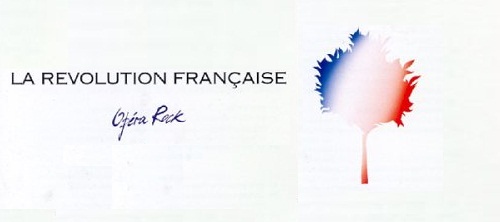
Musical
Musique: Claude-Michel Schonberg • Raymont Jeannot • Paroles: Alain Boublil • Jean Max-Rivière • Livret: Alain Boublil • Claude-Michel Schonberg • Production originale: 2 versions mentionnées
Dispo: Synopsis Génèse Liste chansons
Les comédies musicales françaises.... !!!! Malgré ce que certains pourraient croire, le premier grand succès n'est pas Notre-Dame de Paris en 1998. Il y a avait déjà bien sûr eu le phénomène Starmania en 1978-79 (puis 1988 puis 1993) dont la plupart des chansons sont devenues des tubes qui sont encore sur toutes les lèvres et dans tous les coeurs.
Mais il ne faut pas oublier quelques années auparavant... Il y avait eu un autre phénomène d'ampleur comparable, même si un peu oublié depuis: Le concept-album La Révolution Française, en 1973.
Et juste pour parler d'une époque où tout était possible: parmi les interprètes de la Révolution Française, on remarque, entre autres, le groupe pop Martin Circus, un débutant qui s'appelle Alain Bashung dans le rôle de Robespierre et un autre nommé Daniel Balavoine parmi les Choristes !
Genèse: En 1973, la jeunesse du monde venait de briser la morne grisaille que ses ainés lui préparaient. Elle voyait la vie autrement.
 1973? Après des années de Gaullisme, ce qui nous replonge jusqu'à la deuxième guerre mondiale, les français s'apprêtent à voter pour un très jeune Président, Valéry Giscard D'Estaing en 1974 (même si à notre époque ce n'est pas l'image qu'il donne).
Les médias? Il y avait seulement trois chaînes de télévisions, respectivement appelées la 1ère chaîne, Antenne 2, et FR3. Cette dernière venait de naître en 1972. Sur les ondes, à coté des radios publiques, deux stations dites 'périphériques' émettaient leurs programmes: Europe1 et RTL. Les médias officiels de cette époque, sous un fort contrôle de l'Etat, diffusaient la culture officielle destinée à satisfaire, en apparence, le goût du public.
1973? Après des années de Gaullisme, ce qui nous replonge jusqu'à la deuxième guerre mondiale, les français s'apprêtent à voter pour un très jeune Président, Valéry Giscard D'Estaing en 1974 (même si à notre époque ce n'est pas l'image qu'il donne).
Les médias? Il y avait seulement trois chaînes de télévisions, respectivement appelées la 1ère chaîne, Antenne 2, et FR3. Cette dernière venait de naître en 1972. Sur les ondes, à coté des radios publiques, deux stations dites 'périphériques' émettaient leurs programmes: Europe1 et RTL. Les médias officiels de cette époque, sous un fort contrôle de l'Etat, diffusaient la culture officielle destinée à satisfaire, en apparence, le goût du public.
 Mais... Au même moment, la jeunesse ne jure plus que par la pop-rock anglo-saxonne (Les Beatles, Rolling Stones, et autres grands rocks stars). Quel fossé avec la culture officielle diffusée par les médias, Sheila ou Mireille Mathieu, et le goût réel exprimé par les consommateurs lycéens ou universitaires. Le décalage cessera lorsque les premières radios 'libres' émettront sur la bande FM au début des années 80, suite aux décisions de François Miterrand et de son ministre de la culture, Jack Lang. Dans le théâtre musical, Hair adapté en français révèle une pléiade de jeunes artistes dont certains feront des carrières glorieuses comme Julien Clerc.
Un autre spectacle Jesus Christ Superstar, non adapté à la scène en France, valide un nouveau produit artistique: Le concept-album, et une attitude: Sans complexe et avec hardiesse. Le disque propose une trame narrative cohérente, les chansons sont reliées par un fil conducteur. Bref, les auteurs racontent une histoire en chansons, en respectant une évolution dramatique qui a l'ambition de tenir le passage sur scène. Le disque constitue, en théorie, une étape avant la représentation effective au théâtre.
Une fois le décor planté, les jeunes auteurs Alain Boublil et Jean-Max Rivière pour les textes, et Claude-Michel Schönberg pour la musique, font leur apparition sur le devant de la scène.
L'énorme succès de Jesus Christ Superstar a ouvert des horizons inespérés, et ils s'engouffrent dans le nouveau passage ouvert. L'opéra-rock La Révolution Française naît en 1973 sous la forme d'un concept-album de deux disques 33 tours. Le public répond favorablement (300 000 exemplaires vendus), et facilement du fait de la présence dans la distribution de chanteurs connus à l'époque : Les groupes0 Martin Circus et Les Charlots. On peut ajouter le futur nom illustre de Alain Bashung, et relever celui d'un certain Schönberg Claude-Michel dans le rôle de Louis XVI. Les auteurs n'étaient pas des débutants, ils travaillaient déjà depuis un certain temps dans le monde des studios d'enregistrement comme producteur et auteurs.
Ce qui surprend le public au premier abord, c'est le ton autoritaire de la chanson 'révolutionnaire' Français, francais et la chanson contre-révolutionnaire Chouans, en avant! (par Saint Denis ! Par Saint Jean !). A une époque encore Love and Peace, ces textes décalés plaisent pour leur aspect (involontairement) provocateur. Puis on s'attache à cette tranche d'Histoire mise en musique de manière si séduisante et si originale.
Mais... Au même moment, la jeunesse ne jure plus que par la pop-rock anglo-saxonne (Les Beatles, Rolling Stones, et autres grands rocks stars). Quel fossé avec la culture officielle diffusée par les médias, Sheila ou Mireille Mathieu, et le goût réel exprimé par les consommateurs lycéens ou universitaires. Le décalage cessera lorsque les premières radios 'libres' émettront sur la bande FM au début des années 80, suite aux décisions de François Miterrand et de son ministre de la culture, Jack Lang. Dans le théâtre musical, Hair adapté en français révèle une pléiade de jeunes artistes dont certains feront des carrières glorieuses comme Julien Clerc.
Un autre spectacle Jesus Christ Superstar, non adapté à la scène en France, valide un nouveau produit artistique: Le concept-album, et une attitude: Sans complexe et avec hardiesse. Le disque propose une trame narrative cohérente, les chansons sont reliées par un fil conducteur. Bref, les auteurs racontent une histoire en chansons, en respectant une évolution dramatique qui a l'ambition de tenir le passage sur scène. Le disque constitue, en théorie, une étape avant la représentation effective au théâtre.
Une fois le décor planté, les jeunes auteurs Alain Boublil et Jean-Max Rivière pour les textes, et Claude-Michel Schönberg pour la musique, font leur apparition sur le devant de la scène.
L'énorme succès de Jesus Christ Superstar a ouvert des horizons inespérés, et ils s'engouffrent dans le nouveau passage ouvert. L'opéra-rock La Révolution Française naît en 1973 sous la forme d'un concept-album de deux disques 33 tours. Le public répond favorablement (300 000 exemplaires vendus), et facilement du fait de la présence dans la distribution de chanteurs connus à l'époque : Les groupes0 Martin Circus et Les Charlots. On peut ajouter le futur nom illustre de Alain Bashung, et relever celui d'un certain Schönberg Claude-Michel dans le rôle de Louis XVI. Les auteurs n'étaient pas des débutants, ils travaillaient déjà depuis un certain temps dans le monde des studios d'enregistrement comme producteur et auteurs.
Ce qui surprend le public au premier abord, c'est le ton autoritaire de la chanson 'révolutionnaire' Français, francais et la chanson contre-révolutionnaire Chouans, en avant! (par Saint Denis ! Par Saint Jean !). A une époque encore Love and Peace, ces textes décalés plaisent pour leur aspect (involontairement) provocateur. Puis on s'attache à cette tranche d'Histoire mise en musique de manière si séduisante et si originale.
 Dans sa forme, le concept-album possédait un charme fou par son graphisme et la cohérence du produit avec sa musique. On oscille entre opérette, pop-rock et leçon d'Histoire. A un moment où, avec Astérix, Tintin et Lucky Luke, la bande dessinée était devenu un art reconnu du grand public, puis était devenu adulte (grâce au journal Pilote), il y avait une complicité entre les musiciens populaires et les dessinateurs. Ces derniers illustraient souvent les albums des premiers. Ce fût le cas avec La Révolution Française, à qui se trouvait attaché à son premier tirage un livret de 16 pages: une bande dessinée qui racontait l'opéra-rock en dessins et bulles
Les dessins sont de Bernard Monié.
Dans sa forme, le concept-album possédait un charme fou par son graphisme et la cohérence du produit avec sa musique. On oscille entre opérette, pop-rock et leçon d'Histoire. A un moment où, avec Astérix, Tintin et Lucky Luke, la bande dessinée était devenu un art reconnu du grand public, puis était devenu adulte (grâce au journal Pilote), il y avait une complicité entre les musiciens populaires et les dessinateurs. Ces derniers illustraient souvent les albums des premiers. Ce fût le cas avec La Révolution Française, à qui se trouvait attaché à son premier tirage un livret de 16 pages: une bande dessinée qui racontait l'opéra-rock en dessins et bulles
Les dessins sont de Bernard Monié.
 On pouvait donc suivre visuellement ce que racontaient les 25 chansons, et on savait immédiatement qu'il y avait une histoire.
Cette bande dessinée constituait une aubaine pour Boublil, Rivière et Schönberg. Ils n'avaient pas à expliquer en long, en large et en fastidieux, que la Révolution Française était un assemblage cohérent de chansons. Le livret le faisait très bien et d'une manière aisément accessible au public. On n'était pas éloigné du spectacle total, puisqu'il y avait du visuel, et du sonore. On écoutait le disque en suivant les illustrations.
Le théâtre musical français balbutiant tenait son premier chef-d'œuvre. Le coup d'essai était un coup de maître. Et Boublil et Schönberg, l'histoire ne faisait que commencer, magnifiquement.
On pouvait donc suivre visuellement ce que racontaient les 25 chansons, et on savait immédiatement qu'il y avait une histoire.
Cette bande dessinée constituait une aubaine pour Boublil, Rivière et Schönberg. Ils n'avaient pas à expliquer en long, en large et en fastidieux, que la Révolution Française était un assemblage cohérent de chansons. Le livret le faisait très bien et d'une manière aisément accessible au public. On n'était pas éloigné du spectacle total, puisqu'il y avait du visuel, et du sonore. On écoutait le disque en suivant les illustrations.
Le théâtre musical français balbutiant tenait son premier chef-d'œuvre. Le coup d'essai était un coup de maître. Et Boublil et Schönberg, l'histoire ne faisait que commencer, magnifiquement.
 La réédition en CD n'a pas rendu justice à ce qu'a été La Révolution Française en son temps. Ravalé au rang d'œuvre de jeunesse, ne pouvant pas soutenir, soit-disant, la comparaison avec les spectacles suivants, le CD a une présentation qu'on pourrait qualifier de sobre, pour ne pas dire ... Misérable.
C'est bien dommage quand on se remémore le faste, l'originalité et l'accueil chaleureux de l'édition originale en 33 tours.
La Révolution Française a été un phénomène du début des années 70, qui a préparé le terrain au Starmania de Berger/Plamandon, et qui a aussi permis la gestation en deux étapes de Les Misérables. Et en plus d'avoir été précurseur en France, La Révolution Française possède ses qualités propres qui en font un plaisir à l'écoute, pour peu qu'un texte, et même un livret soit accessible. Les amateurs à l'époque l'ont écouté des dizaines de fois, et l'ont vu au théâtre (le Palais des Sports de la Porte de Versailles, Paris) pendant les quelques mois de représentation. La Révolution FrançaiseLa Révolution Française mérite amplement, eût-égard à l'actuelle notoriété des auteurs, une réédition digne et complète.
Il porte déjà en lui les traits qui font l'identité artistique de Boublil et Schönberg. Dès ce premier opéra-rock, les auteurs se sont appuyés sur une époque tourmentée de l'Histoire. Le spectateur connait normalement la trame historique, qui fait partie de la culture générale du public, et va s'attacher à des individus qui vont animer ou subir les événements. La force dramatique naît du fort contraste entre le souffle épique de la situation, et la vulnérabilité des protagonistes qui peuvent tout perdre à tout moment. Et rien ne leur sera épargné. Le spectateur est au courant des événements, qui enveloppent les personnages en plein désarroi. Ce décalage entre celui qui regarde et sait (le spectateur), et ceux qui vont apprendre à leur dépends transforme le spectacle en un mélo puissamment bouleversant, porté par des chansons débordants de l'émotion des personnages.
Les personnages fragiles que les auteurs mettent en musique sont mus par la force de l'amour, qui leur permet de supporter les terribles épreuves qui s'abattent sur leur communauté. Les chansons font très bien ressortir la lumière intérieure qui habite les protagonistes et qui les rend si émouvant sur scène.
Les mots sont souvent simples, ce qui rend leur spontanéité et leur douleur bouleversante, notamment pour les personnages qu'on sait condamnés (Fantine des Misérables par exemple).
En contrepoint à la fragilités des individus, les scènes de foules et les ensembles sont vibrants, et magnifiquement traitées. Elles font avancer l'intrigue, en donnant la voix à la communauté et à l'Histoire, tout en ménageant des respirations dans l'évocations des destins individuels. Boublil et Schönberg aiment les chœurs et les ensembles, et ils les servent bien.
Tous ces traits de caractères artistiques, déjà présents dans La Révolution Française, on les retrouvera naturellement dans Les Misérables (1980, puis 1986), Miss Saïgon (1989) et Martin Guerre (1996).
La réédition en CD n'a pas rendu justice à ce qu'a été La Révolution Française en son temps. Ravalé au rang d'œuvre de jeunesse, ne pouvant pas soutenir, soit-disant, la comparaison avec les spectacles suivants, le CD a une présentation qu'on pourrait qualifier de sobre, pour ne pas dire ... Misérable.
C'est bien dommage quand on se remémore le faste, l'originalité et l'accueil chaleureux de l'édition originale en 33 tours.
La Révolution Française a été un phénomène du début des années 70, qui a préparé le terrain au Starmania de Berger/Plamandon, et qui a aussi permis la gestation en deux étapes de Les Misérables. Et en plus d'avoir été précurseur en France, La Révolution Française possède ses qualités propres qui en font un plaisir à l'écoute, pour peu qu'un texte, et même un livret soit accessible. Les amateurs à l'époque l'ont écouté des dizaines de fois, et l'ont vu au théâtre (le Palais des Sports de la Porte de Versailles, Paris) pendant les quelques mois de représentation. La Révolution FrançaiseLa Révolution Française mérite amplement, eût-égard à l'actuelle notoriété des auteurs, une réédition digne et complète.
Il porte déjà en lui les traits qui font l'identité artistique de Boublil et Schönberg. Dès ce premier opéra-rock, les auteurs se sont appuyés sur une époque tourmentée de l'Histoire. Le spectateur connait normalement la trame historique, qui fait partie de la culture générale du public, et va s'attacher à des individus qui vont animer ou subir les événements. La force dramatique naît du fort contraste entre le souffle épique de la situation, et la vulnérabilité des protagonistes qui peuvent tout perdre à tout moment. Et rien ne leur sera épargné. Le spectateur est au courant des événements, qui enveloppent les personnages en plein désarroi. Ce décalage entre celui qui regarde et sait (le spectateur), et ceux qui vont apprendre à leur dépends transforme le spectacle en un mélo puissamment bouleversant, porté par des chansons débordants de l'émotion des personnages.
Les personnages fragiles que les auteurs mettent en musique sont mus par la force de l'amour, qui leur permet de supporter les terribles épreuves qui s'abattent sur leur communauté. Les chansons font très bien ressortir la lumière intérieure qui habite les protagonistes et qui les rend si émouvant sur scène.
Les mots sont souvent simples, ce qui rend leur spontanéité et leur douleur bouleversante, notamment pour les personnages qu'on sait condamnés (Fantine des Misérables par exemple).
En contrepoint à la fragilités des individus, les scènes de foules et les ensembles sont vibrants, et magnifiquement traitées. Elles font avancer l'intrigue, en donnant la voix à la communauté et à l'Histoire, tout en ménageant des respirations dans l'évocations des destins individuels. Boublil et Schönberg aiment les chœurs et les ensembles, et ils les servent bien.
Tous ces traits de caractères artistiques, déjà présents dans La Révolution Française, on les retrouvera naturellement dans Les Misérables (1980, puis 1986), Miss Saïgon (1989) et Martin Guerre (1996).
Résumé:
Création: 2/10/1973 - Palais des Sports (Paris) - représ.
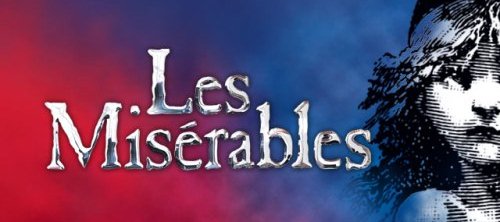
Musical
Musique: Claude-Michel Schonberg • Paroles: Alain Boublil • Jean-Marc Natel • Livret: Alain Boublil • Jean-Marc Natel • Production originale: 28 versions mentionnées
Dispo: Synopsis Génèse Liste chansons
Vidéos:
Genèse: Background Originally released as a French-language concept album, the first musical-stage adaptation of Les Misérables was presented at a Paris sports arena, the Palais des Sports, in 1980. However, the first production closed after three months when the booking contract expired. In 1983, about six months after producer Cameron Mackintosh had opened Cats on Broadway, he received a copy of the French concept album from director Peter Farago. Farago had been impressed by the work and asked Mackintosh to produce an English-language version of the show. Initially reluctant, Mackintosh eventually agreed. Mackintosh in conjunction with the Royal Shakespeare Company, assembled a production team to adapt the French musical for a British audience. After two years in development, the English-language version opened in London on 8 October 1985, by the Royal Shakespeare Company at the Barbican Centre, then the London home of the RSC. The success of the West End musical led to a Broadway production. Original French production French songwriter Alain Boublil had the idea to adapt Victor Hugo's novel into a musical while at a performance of the musical Oliver! in London: As soon as the Artful Dodger came onstage, Gavroche came to mind. It was like a blow to the solar plexus. I started seeing all the characters of Victor Hugo's Les Misérables—Valjean, Javert, Gavroche, Cosette, Marius, and Éponine—in my mind's eye, laughing, crying, and singing onstage. He pitched the idea to French composer Claude-Michel Schönberg, and the two developed a rough synopsis. They worked up an analysis of each character's mental and emotional state, as well as that of an audience. Schönberg then began to write the music, while Alain Boublil began work on the text. According to Alain Boublil, "...I could begin work on the words. This I did—after myself deciding on the subject and title of every song—in collaboration with my friend, poet Jean-Marc Natel." Two years later, a two-hour demo tape with Schönberg accompanying himself on the piano and singing every role was completed. An album of this collaboration was recorded at CTS Studios in Wembley and was released in 1980, selling 260,000 copies. The concept album includes Maurice Barrier as Jean Valjean, Jacques Mercier as Javert, Rose Laurens as Fantine, Yvan Dautin as Thénardier, Marie-France Roussel as Mme. Thénardier, Richard Dewitte as Marius, Fabienne Guyon as Cosette, Marie-France Dufour as Éponine, Michel Sardou as Enjolras, Fabrice Bernard as Gavroche, Maryse Cédolin as Young Cosette, Claude-Michel Schönberg as Courfeyrac, Salvatore Adamo as Combeferre, Michel Delpech as Feuilly, Dominique Tirmont as M. Gillenormand, and Mireille as the hair buyer. That year, in September 1980, a stage version directed by veteran French film director Robert Hossein was produced at the Palais des Sports in Paris. The show was a success, with 100 performances seen by over 500,000 people. Most of the cast from the concept album performed in the production. The cast included Maurice Barrier as Valjean, Jean Vallée as Javert, Rose Laurens as Fantine, Maryse Cédolin and Sylvie Camacho and Priscilla Patron as Young Cosette, Marie-France Roussel as Mme. Thénardier, Yvan Dautin as M. Thénardier, Florence Davis and Fabrice Ploquin and Cyrille Dupont as Gavroche, Marianne Mille as Éponine, Gilles Buhlmann as Marius, Christian Ratellin as Enjolras, Fabienne Guyon as Cosette, René-Louis Baron as Combeferre, Dominique Tirmont as M. Gillenormand, Anne Forrez as Mlle. Gillenormand, and Claude Reva as the storyteller. Original West End production The English-language version, with lyrics by Herbert Kretzmer and additional material by James Fenton, was substantially expanded and reworked from a literal translation by Siobhan Bracke of the original Paris version, in particular adding a prologue to tell Jean Valjean's backstory. Kretzmer's work is not a direct "translation" of the French, a term that Kretzmer refused to use. A third of the English lyrics were a "rough" translation, another third were adapted from the French lyrics and the final third consisted of new material. The majority is performed in recitative style; the vocalists use natural speech delivery, not musical metrics. The first production in English, produced by Cameron Mackintosh and adapted and directed by Trevor Nunn and John Caird, opened on 8 October 1985 (five years after the original production) at the Barbican Arts Centre, London. It was billed in the RSC Barbican Theatre programme as "The Royal Shakespeare Company presentation of the RSC/Cameron Mackintosh production", and played to preview performances beginning on 28 September 1985. The set was designed by John Napier, costumes by Andreane Neofitou and lighting by David Hersey. Musical supervision and orchestrations were by John Cameron, who had been involved with the show since Claude-Michel and Alain hired him to orchestrate the original French concept album. Musical staging was by Kate Flatt with musical direction by Martin Koch. The original London cast included Colm Wilkinson as Jean Valjean, Roger Allam as Javert, Ken Caswell as the Bishop of Digne, Patti LuPone as Fantine, Zoë Hart, Jayne O'Mahony and Joanne Woodcock as Young Cosette, Danielle Akers, Gillian Brander and Juliette Caton as Young Éponine, Susan Jane Tanner as Madame Thénardier, Alun Armstrong as Thénardier, Frances Ruffelle as Éponine, Rebecca Caine as Cosette, Michael Ball as Marius, David Burt as Enjolras, with Ian Tucker, Oliver Spencer and Liza Hayden sharing the role of Gavroche. On 4 December 1985, the show transferred to the Palace Theatre, London and moved again on 3 April 2004, to the much more intimate Queen's Theatre, with some revisions of staging and where, as of January 2013, it was still playing. It celebrated its ten-thousandth performance on 5 January 2010. The drummer from the original cast album, Peter Boita, stayed with the show for the first 25 years of its history. The co-production has generated valuable income for the Royal Shakespeare Company. Original Broadway production The musical had its out-of-town tryout at the Kennedy Center's Opera House in Washington D.C., in December 1986 for eight weeks, through February 14, 1987. The musical then premiered on Broadway on March 12, 1987 at The Broadway Theatre. Colm Wilkinson and Frances Ruffelle reprised their roles from the London production. The $4.5 million production had a more than $4 million advance sale prior to its New York opening. The show underwent further tightening and an improved sewer lighting and Javert suicide scene effect was incorporated. Boublil explained: "The transfer from London to the United States has prompted further modifications. 'We are taking this opportunity to rethink and perfect, to rewrite some details which probably no one else will see, but which for us are still long nights of work,' Mr. Boublil says. 'There are things that nobody had time to do in London, and here we have a wonderful opportunity to fix a few things. No one will notice, perhaps, but for us, it will make us so happy if we can better this show. We would like this to be the final version.'" Two songs were deleted—the complete version of Gavroche's song "Little People" and the adult Cosette's "I Saw Him Once". A short section at the beginning of "In My Life" replaced "I Saw Him Once". The lyrics in Javert's "Stars" were changed. It now ended with the line, "This I swear by the stars!", while the London production and cast recording ended with the repeated line, "Keeping watch in the night". The original Broadway cast included Colm Wilkinson as Jean Valjean, David Bryant as Marius, Judy Kuhn as Cosette, Michael Maguire as Enjolras, Frances Ruffelle as Éponine, Braden Danner as Gavroche, Donna Vivino as Young Cosette, Jennifer Butt as Madame Thénardier, Leo Burmester as Thénardier, Randy Graff as Fantine, Terrence Mann as Javert, Chrissie McDonald as Young Éponine, and Norman Large as the Bishop of Digne. Other members of the original Broadway cast included Kevin Marcum, Paul Harman, Anthony Crivello, John Dewar, Joseph Kolinski, Alex Santoriello, Jesse Corti, Susan Goodman, John Norman, Norman Large, Marcus Lovett, Steve Shocket, Cindy Benson, Marcie Shaw, Jane Bodle, Joanna Glushak, Ann Crumb, Kelli James, Gretchen Kingsley-Weihe, Chrissie McDonald. Michael Hinton was the original drummer and credited on the cast album. The musical ran at the Broadway Theatre through October 10, 1990, when it moved to the Imperial Theatre. It was scheduled to close on March 15, 2003, but the closing was postponed by a surge in public interest. According to an article in The Scotsman, "Sales picked up last October, when Sir Cameron made the announcement that the show would be closing on March 15th...its closure postponed to May 18th because of an unexpected increase in business." After 6,680 performances in sixteen years, when it closed on May 18, 2003, it was the second-longest-running Broadway musical after Cats. It was surpassed by The Phantom of the Opera, in 2006. This Broadway production of Les Misérables and its advertising in New York City is a reoccurring theme in American Psycho. The reviewer for the Financial Times wrote that Les Misérables is "the book's hilarious main cultural compass-point". 10th Anniversary Concert On 8 October 1995, the show celebrated its tenth anniversary with a concert at the Royal Albert Hall. This 10th Anniversary Concert was nearly "complete," missing only a handful of scenes, including "The Death of Gavroche" and the confrontation between Marius and the Thénardiers at the wedding feast. Sir Cameron Mackintosh hand-selected the cast, which became known as the Les Misérables Dream Cast, assembled from around the world, and engaged the Royal Philharmonic Orchestra. The concert concluded with seventeen Valjeans from various international productions singing, "Do You Hear the People Sing?" in their native languages. The concert cast included Colm Wilkinson as Jean Valjean, Philip Quast as Javert, Paul Monaghan as the Bishop of Digne, Ruthie Henshall as Fantine, Hannah Chick as Young Cosette, Jenny Galloway as Madame Thénardier, Alun Armstrong as Thénardier, Adam Searles as Gavroche, Michael Maguire as Enjolras, Michael Ball as Marius, Judy Kuhn as Cosette, Lea Salonga as Éponine, and Anthony Crivello as Grantaire. The concert was staged by Ken Caswell and conducted by David Charles Abell. 25th Anniversary International Tour A tour to commemorate the 25th anniversary of the show began performances on 12 December 2009, at the Wales Millennium Centre in Cardiff. Differences from the original production included a new set, new costumes, new direction and alterations to the original orchestrations. The tour also did not use a revolving stage and the scenery was inspired by the paintings of Victor Hugo. Locations have included Manchester, Norwich, Birmingham, Edinburgh, Bristol, Salford, and Southampton. The tour also played a special engagement in Paris. From September through October, the show returned to the Barbican Centre, London, site of the original 1985 production. The tour cast featured John Owen-Jones as Valjean, Earl Carpenter as Javert, Gareth Gates as Marius, Ashley Artus as Thénardier, Lynne Wilmot as Madame Thénardier, Madalena Alberto as Fantine, Rosalind James as Éponine, Jon Robyns as Enjolras, Katie Hall as Cosette (with Eliza Jones as Young Cosette), and David Lawrence as the Bishop of Digne. The tour ended 2 October 2010, at the Barbican. Since its UK premiere, several international productions based on the 25th Anniversary Tour has been staged in different countries, including Spain, South Korea and Japan. In the fall of 2010, The tour moved to the US with a new company presented by Broadway Across America to celebrate the 25th anniversary of the show opening on Broadway. The tour had its opening on 19 November 2010 at the Paper Mill Playhouse in Millburn, New Jersey, running until 19 December 2010. This tour originally starred Lawrence Clayton as Valjean, Andrew Varela as Javert, Betsy Morgan as Fantine, Jenny Latimer as Cosette, Justin Scott Brown as Marius, Chasten Harmon as Éponine, Michael Kostroff as Thénardier, Shawna Hamic as Madame Thénardier, Jeremy Hays as Enjolras, Josh Caggiano and Ethan Paul Khusidman as Gavroche, Maya Jade Frank and Juliana Simone alternating as Young Cosette and Young Éponine. J. Mark McVey's daughter, Kylie McVey was the understudy for Young Cosette and Young Éponine. Clayton left the tour in April 2011. Ron Sharpe later took over as Valjean until June 2011. J. Mark McVey was then Valjean, but McVey and his daughter left the tour on 1 April 2012. Peter Lockyer replaces him as Valjean. Betsy Morgan left the tour on December 2, 2012. She was replaced by Genevieve Leclerc. The tour is scheduled to run through 2012, though it is expected to run until 2013 as more cities are added. In 2011 it was reported that the tour is one of six US national Broadway tours that are grossing over $1,000,000 per week. 25th Anniversary Concert The 25th Anniversary Concert of Les Misérables was held at The O2 in North Greenwich on Sunday, 3 October 2010 at 1:30 pm and 7:00 pm. It featured Alfie Boe as Jean Valjean, Norm Lewis as Javert, Lea Salonga as Fantine, Nick Jonas as Marius, Katie Hall as Cosette, Jenny Galloway as Madame Thénardier, Ramin Karimloo as Enjolras, Samantha Barks as Éponine, Matt Lucas as Thénardier, Mia Jenkins as Young Cosette, Robert Madge as Gavroche and Earl Carpenter as the Bishop of Digne. (Originally, Camilla Kerslake had been selected to perform as Cosette, however she was unable to attend. Katie Hall was selected in her place. Hall had previously acted the role at the Queen's Theatre from 2009 and in the 25th Anniversary Tour production at the Barbican.) Casts of the current London, international tour, original 1985 London, and several school productions took part, comprising an ensemble of three hundred performers and musicians. The concert was directed by Laurence Connor & James Powell and conducted by David Charles Abell.
Résumé:
Création: 1/9/1980 - Palais des Sports (Paris) - représ.
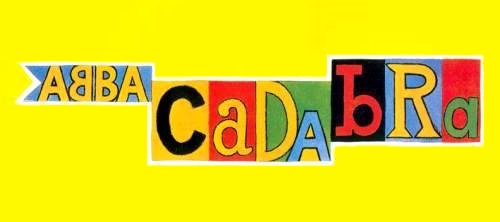
Musical
Musique: Benny Andersson • Björn Ulvaeus • Paroles: Don Black • Mike Batt • Livret: Alain Boublil • Daniel Boublil • David Wood • Production originale: 1 version mentionnée
Dispo: Synopsis Génèse
Genèse: Abbacadabra est un « conte musical » pour enfant réalisé pour la télévision par Alain et Daniel Boublil qui a été diffusé en neuf parties de 5 à 10 minutes environ pendant les vacances de Noël dès le 21 décembre 1983. La musique est celle des chansons du groupe suédois Abba. Parmi les interprètes adultes se trouvent : Fabienne Thibeault, Daniel Balavoine, Plastic Bertrand, Frida (seule membre d'ABBA présente), Maurice Barrier, Daniel Boublil (sous le pseudonyme de Daniel Beaufixe), Francoise Pourcel (sous le pseudonyme de Marie Framboise), Catherine Ferry, Les enfants : Stéphane Le Navelan (soliste des Petits Chanteurs d'Asnières), Stéphane Boublil (le fils d'Alain), Clémentine Autain, Emmanuelle Pailly (doubleuse, entre autres, de dessins animés japonais), Claire D'asta, et les Petits Chanteurs d'Asnières pour les chœurs. De ce conte, naîtra un 33 tours réunissant les interprètes de la création télévisée. Les chansons « Mon nez mon nez mon nez » (Money Money Money) interprétée par Plastic Bertrand, « Belle », un des titres phares du disque avec un duo de Daniel Balavoine et Frida, « L'enfant Do » et « Tête d'allumette » sortiront en single. Plus tard, « Gare au loup » (Waterloo), avec Léa Drucker, qui remplacera Clémentine Autain, sortira en single, courant 1984. Cameron Mackintosh décide de produire une version anglaise de la comédie musicale, avec des textes de David Wood et Don Black. La première a eu lieu le 8 décembre 1983 au Lyric Hammersmith Theatre, à Londres. Parmi les interprètes de l'édition anglaise, on trouve : Elaine Paige, Michael Praed, Finola Hughes et Jenna Russell.
Résumé:
Création: 8/12/1983 - Lyric Hammersmith Main House (Londres) - représ.
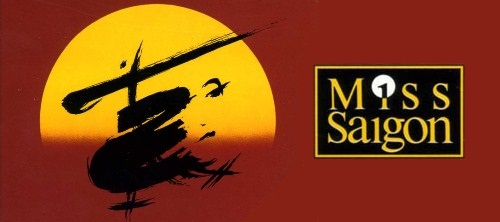
Musical
Musique: Claude-Michel Schonberg • Paroles: Alain Boublil • Richard Jr Maltby • Livret: Alain Boublil • Claude-Michel Schonberg • Production originale: 16 versions mentionnées
Dispo: Résumé Synopsis Génèse Liste chansons
Vidéos:
Genèse: By the time of the transfer of Les Misérables to the Palace Theatre on 4 December 1985 Alain and Claude-Michel were already working on an idea for a new musical. The idea stemmed from a news photograph that Claude-Michel had come across during a coffee break one autumn afternoon in Paris. It showed a Vietnamese woman parting with her child at Tan Son Nhut airport, so that child could have a better life with her G.I. father in America. It reminded him of Cio-Cio-San’s ultimate sacrifice in Madame Butterfly. But Miss Saigon is not simply a re-telling of the Butterfly story. That was just a starting point from which to construct their own narrative, merging only some aspects of the story with their own original contemporary subject matter and contemporary characters. There was a sense of freedom in writing an original creation as compared to writing an adaptation. With Les Misérables they were tied to a fixed narrative, which was not only a great classic but a huge epic story and one which required the skilful compression of large chunks of narrative. With Miss Saigon, however, the technique was the reverse of compression, it was one of expansion. The Butterfly plot of a misunderstanding between two individuals of highly different cultures was retained but the story was projected into a tragic period of modern history when that basic misunderstanding between two people could reflect the deeper misunderstanding between their respective countries at war. In many ways it was a very risky thing for two Frenchmen to be writing an English-produced musical of an American story about Vietnam. But Alain and Claude-Michel thrive on writing to the edge and taking risks – doing something completely new with each musical. Richard Maltby Jr. worked on the story and lyrics with Alain, and it was essential to have an American on board to inject a real understanding of American sensibility into the story. This was the first time that Alain was co-writing the lyrics in English and he found Richard an immensely sympathetic writing partner. As director, Nicholas Hytner found ways of staging seemingly impossible scenes, such as the evacuation from the American Embassy, with great imagination and visual flair. Miss Saigon opened at the Theatre Royal Drury Lane on 20 September 1989. This is London’s oldest and most historically important theatre with a huge stage and a seating capacity of over 2,200. It was definitely the show of the moment and received mostly great reviews. Even the Guardian’s Michael Billington, normally known for his disdain of musicals, wrote that it was a first rate piece of popular theatre which proved that a musical could address a serious theme with sincerity, emotion and integrity. The show proved enormously popular with the public, becoming the longest running musical at that theatre closing only in October 1999 after a ten year run. West End Miss Saigon premiered in the West End at the Theatre Royal, Drury Lane on 20 September 1989 and closed after 4,264 performances on 30 October 1999. The director was Nicholas Hytner with musical staging by Bob Avian and scenic design by John Napier. In December 1994 the London production became the Theatre Royal's Drury Lane longest running musical, eclipsing the record set by My Fair Lady. The original Kim was played by Lea Salonga, who became famous because of this role and won the Laurence Olivier Award and Tony Award. The original Engineer was portrayed by Jonathan Pryce who won a Tony Award for the role. Broadway The musical debuted on Broadway at the Broadway Theatre on 11 April 1991 and closed on 28 January 2001 after 4.092 performances. Directed again by Nicholas Hytner with musical staging by Bob Avian, scenic design was by John Napier, costume design was by Andreane Neofitou and Suzy Benzinger and lighting design was by David Hersey. As of September 2011, Miss Saigon is still the 11th longest-running Broadway musical in musical theatre history. Other productions Since its opening in London Miss Saigon was produced in many cities around the world including Stuttgart from 2 December 1994 till 19 December 1999 and Toronto, where new theatres were designed specifically to house the show. In the small island community of Bømlo, Norway with only around eleven thousand inhabitants, the show was set up in the outdoor amphitheater by the local musical fellowship and ran from 5 August to 16 August 2009. The local musical fellowship brought in a Bell Helicopter for the show. According to the Miss Saigon Official Site, Miss Saigon has been performed by twenty-seven companies in twenty-five countries and 246 cities, and it has been translated into twelve different languages. The new production of Miss Saigon at Her Majesty's Theatre in Melbourne Tours After the London production closed in 1999 and also following the closure of the Broadway production in 2001 the show in its original London staging embarked on a long tour of the six largest venues in Britain and Ireland stopping off in each city for several months. The tour opened at the Palace Theatre, Manchester and also played in the Birmingham Hippodrome, the Mayflower Theatre Southampton, the Edinburgh Playhouse, the Bristol Hippodrome and The Point Theatre in Dublin. This successful tour drew to a close in 2003 and a brand new production was developed by original producer Cameron Mackintosh on a smaller scale so that the show could be accommodated in smaller theatres. This new tour started in July 2004 and ended in June 2006. The first US tour started in Chicago, Illinois in October 1992 and was then expected to travel to those cities which could accommodate the large production. The tour also played venues such as the Wang Center in Boston from 14 July to 12 September 1993, the Broward Center for the Performing Arts, Florida in the Spring 1994, and the Kennedy Center, Washington, DC in June 1994. Cameron Mackintosh said: "Corners haven't been cut. They've been added. There are only a dozen theaters in America where we can do this." A second North American tour was in Summer 2002 – Spring 2005, playing such venues as the New Jersey Performing Arts Center, Newark, New Jersey in November 2003, Raleigh, North Carolina in February 2005, and Gainesville, Florida in November 2003.
Résumé: An American soldier named Chris marries Kim before departing for the US, and three years later, has married an American named Ellen and nearly forgotten her. When he discovers Kim is still alive and raising Thuy, a boy he fathered, he returns to Saigon to find her, but with the Viet Cong closing in on the city and two women wanting the only place in his heart, Chris has to make some large decisions before it's all over. (Based on Puccini's opera, Madame Butterfly.)
Création: 20/9/1989 - Drury Lane Theatre (Londres) - représ.
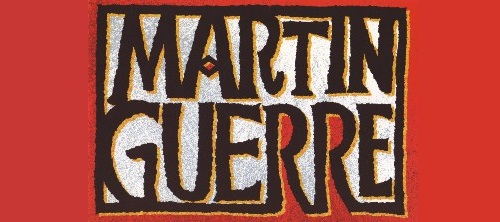
Musical
Musique: Claude-Michel Schonberg • Paroles: Alain Boublil • Claude-Michel Schonberg • Edward Hardy • Herbert Kretzmer • Livret: Alain Boublil • Claude-Michel Schonberg • Production originale: 5 versions mentionnées
Dispo: Résumé Synopsis Génèse
Disons-le tout de suite, Martin Guerre est l'une de nos œuvres favorites. Pourquoi? On n'a même pas envie d'y réfléchir. C'est une œuvre à la fois intime et puissante. La musique est prodigieuse, les paroles sont toujours justes et proches de ce que l'on peut avoir de mieux au théâtre. La scénographie était simple mais soutenait l'œuvre de bout en bout. Un grand musical populaire de qualité, notre référence.
Genèse:  Martin Guerre est certainement la comédie musicale de Boublil et Schönberg qui aura connu le plus de changements au cours de ses représentations à Londres et dans ses tournées anglaise et américaine. A peine trois mois après son ouverture à Londres, le spectacle ferme quelques jours pour subir certains changements.
Peu après sa réouverture sort l'album du spectacle. L'ironie du sort fait que l'album sortant peu après les changements, la version du CD est une sorte de croisement entre les deux versions. Le CD ne correspond donc à aucune version scénique.
Martin Guerre est certainement la comédie musicale de Boublil et Schönberg qui aura connu le plus de changements au cours de ses représentations à Londres et dans ses tournées anglaise et américaine. A peine trois mois après son ouverture à Londres, le spectacle ferme quelques jours pour subir certains changements.
Peu après sa réouverture sort l'album du spectacle. L'ironie du sort fait que l'album sortant peu après les changements, la version du CD est une sorte de croisement entre les deux versions. Le CD ne correspond donc à aucune version scénique.
 Les paroles ayant tellement changé pendant les représentations de Londres, on raconte qu'il n'existe pas de livret contenant exactement ce qui se jouait sur scène chaque soir.
Le public n'est pas au rendez-vous de ce nouveau spectacle mais paradoxalement, c'est la seule comédie musicale de Boublil & Schönberg qui remportera l'Olivier Award (équivalent des Molières en France) du meilleur spectacle musical - Les Misérables et Miss Saigon avaient été nominés en leur temps mais avaient perdu au profit respectivement de Me And My Girl et de Forbidden Planet.
Les paroles ayant tellement changé pendant les représentations de Londres, on raconte qu'il n'existe pas de livret contenant exactement ce qui se jouait sur scène chaque soir.
Le public n'est pas au rendez-vous de ce nouveau spectacle mais paradoxalement, c'est la seule comédie musicale de Boublil & Schönberg qui remportera l'Olivier Award (équivalent des Molières en France) du meilleur spectacle musical - Les Misérables et Miss Saigon avaient été nominés en leur temps mais avaient perdu au profit respectivement de Me And My Girl et de Forbidden Planet.
 Au moment du remplacement de la troupe originale de Londres, on apporte de nouveaux changements au spectacle : une nouvelle chanson faisant son apparition au détriment d'une qui disparait... Mais cela ne suffira pas à sauver le spectacle qui ferme ses portes après 20 mois de représentations.
Ce spectacle, est pour nous, au moins aussi réussi que les deux autres triomphes du couple Boublil-Schonberg, à savoir Les Misérables ou Miss Saigon. Tout est cohérent: les paroles, la musique, la dramaturgie. Pour beaucoup de fans, la seule et unique version de Martin Guerre, c'est celle-ci, celle de Londres. Bien sûr l'histoire est complexe, plus noire encore que Les Miz ou Miss Saigon. Mais les personnages sont savoureux, se découvrant peu à peu dans leur complexité. Il y a beaucoup plus de "non-dits" que dans bon nombre de musicals courants. Il s'agit d'une œuvre à part...
Au moment du remplacement de la troupe originale de Londres, on apporte de nouveaux changements au spectacle : une nouvelle chanson faisant son apparition au détriment d'une qui disparait... Mais cela ne suffira pas à sauver le spectacle qui ferme ses portes après 20 mois de représentations.
Ce spectacle, est pour nous, au moins aussi réussi que les deux autres triomphes du couple Boublil-Schonberg, à savoir Les Misérables ou Miss Saigon. Tout est cohérent: les paroles, la musique, la dramaturgie. Pour beaucoup de fans, la seule et unique version de Martin Guerre, c'est celle-ci, celle de Londres. Bien sûr l'histoire est complexe, plus noire encore que Les Miz ou Miss Saigon. Mais les personnages sont savoureux, se découvrant peu à peu dans leur complexité. Il y a beaucoup plus de "non-dits" que dans bon nombre de musicals courants. Il s'agit d'une œuvre à part...
 Au moment de la fermeture à Londres, une nouvelle mouture du show est déjà prévue pour partir en tournée dans toute l'Angleterre après deux mois de rodage à Leeds. Cette version, qui voit le jour le 1er décembre 1998, sera plus dans l'esprit de ce que ses créateurs avaient en tête au début du projet.
La version de Leeds connait là ses plus profonds changements depuis les débuts. Les paroles, la musique, et même l'histoire s'en trouvent modifiées. Le spectacle connaît un relatif succès qui lui permet de tourner quelques mois dans le Royaume-Uni.
C'est sur cette version qu'est basée la tournée qui traversa quelques grandes villes des Etats-Unis. Malheureusement, Martin Guerre ne trouvant pas de théâtres sur Broadway ayant la capacité d'accueillir un tel spectacle, la tournée n'ira pas jusque là-bas. Mais Martin Guerre n'a pas encore dit, espérons, son dernier mot et nous réserve très certainement bien d'autres surprises.
Au moment de la fermeture à Londres, une nouvelle mouture du show est déjà prévue pour partir en tournée dans toute l'Angleterre après deux mois de rodage à Leeds. Cette version, qui voit le jour le 1er décembre 1998, sera plus dans l'esprit de ce que ses créateurs avaient en tête au début du projet.
La version de Leeds connait là ses plus profonds changements depuis les débuts. Les paroles, la musique, et même l'histoire s'en trouvent modifiées. Le spectacle connaît un relatif succès qui lui permet de tourner quelques mois dans le Royaume-Uni.
C'est sur cette version qu'est basée la tournée qui traversa quelques grandes villes des Etats-Unis. Malheureusement, Martin Guerre ne trouvant pas de théâtres sur Broadway ayant la capacité d'accueillir un tel spectacle, la tournée n'ira pas jusque là-bas. Mais Martin Guerre n'a pas encore dit, espérons, son dernier mot et nous réserve très certainement bien d'autres surprises.
Résumé: Martin Guerre, a real-life historical figure in the anti-Protestant town of Artigat, is forced into an arranged marriage with Bertrande de Rols in order to produce a Catholic heir. The marriage is unsatisfactory and complicated by the fact that a childhood friend, Guillaume, is secretly in love with Bertrande. When war breaks out with the Protestants Martin is happy to leave for the battlefield, where he befriends Arnaud du Thil, and tells him his story. At this point, the musical begins. Martin disappears, assumed dead in the fighting. Arnaud goes to his village to inform Bertrande of her husband's death but, mistaken for the deceased soldier by the residents, he decides to take on the identity of Martin Guerre. Bertrande decides to keep his secret and the two fall in love. Guillaume, who had hoped for a chance with Bertrande while her husband was away, becomes jealous of the supposedly returned soldier. He discovers that “Martin” and Bertrande are secret Protestants and rouses a mob to attack them. Benoit, the village idiot, steps in to announce that Arnaud is an imposter and not the real Martin Guerre, and he is arrested and tried for deception. A shock witness at the trial is the real Martin Guerre himself, having apparently survived the war. The imprisoned Arnaud is freed by Martin who forgives him for stealing his identity, and recognises Arnaud and Bertrande's love for each other. However, the mob sets the town ablaze and Guillaume stabs Arnaud before he can escape. As Arnaud dies in Bertrande's arms, Martin and Bertrande sing mournfully about love and then separate for good.
Création: 10/7/1996 - Prince Edward Theatre (Londres) - représ.
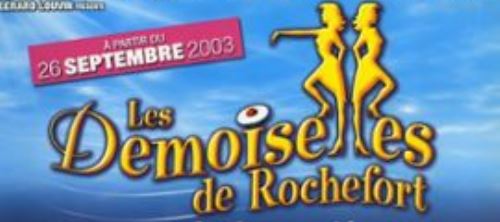
Musical
Musique: Michel Legrand • Paroles: Alain Boublil • Jacques Demy • Livret: Production originale: 1 version mentionnée
Dispo: Résumé Génèse Liste chansons
Genèse: La première du spectacle a lieu le 16 septembre 2003 à Lille Grand Palais. Le 26 septembre, Les Demoiselles de Rochefort sont sur la scène du Palais des congrès de Paris. Après 3 mois de représentations parisiennes, le rideau tombe le 30 décembre 2003 après une centaine de représentations.
Résumé: Deux sœurs jumelles, Delphine et Solange, rêvent d’une carrière artistique de danseuse et de concertiste et aussi du grand amour… Yvonne, leur mère, tient le café de la place et regrette d’avoir laissé partir Simon Dame, son grand amour de jeunesse. Beau marin, peintre à ses heures, Maxence recherche son idéal féminin tandis qu'il termine son service militaire. Andy, grand musicien, ami de Simon Dame, tombe amoureux de Solange alors qu'il vient donner un concert à Rochefort. La kermesse qu'installent Les Forains sur la place va accélérer le tourbillon de la vie et précipiter les rencontres…
Création: 26/9/2003 - Palais des Congrès (Paris) - représ.
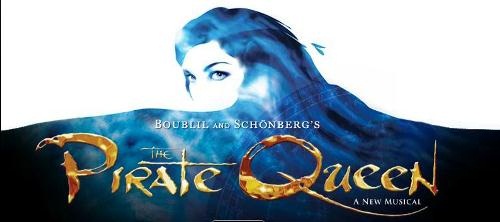
Musical
Musique: Claude-Michel Schonberg • Paroles: Alain Boublil • Claude-Michel Schonberg • Livret: Alain Boublil • Claude-Michel Schonberg • Production originale: 3 versions mentionnées
Dispo: Résumé Synopsis Génèse Isnpiration Liste chansons
Genèse: Développement) In 2005, the show was scheduled to premiere in Chicago, and Playbill reported that Colm Wilkinson was in talks to star in the project. However, when casting was announced, Wilkinson was not included. Towards the end of the Chicago run, Miss Saigon co-lyricist Richard Maltby, Jr. Was brought in to work with Boublil on revisions to the book and lyrics in preparation for the Broadway opening. Additionally, Graciela Daniele worked on the musical staging. Pre-Broadway Run The Pirate Queen debuted at Chicago's Cadillac Palace Theatre in an out-of-town tryout on October 3, 2006, and ran through November 26, 2006. Broadway Run The Broadway previews began at the Foxwoods Theatre (then the Hilton Theatre) on March 6, 2007, with the opening on April 5. It closed on June 17, 2007 after 85 performances and 32 previews. Frank Galati directed, with musical staging by Graciela Daniele, Irish Dance choreography by Carol Leavy Joyce, and additional choreography by Mark Dendy. Musical direction and orchestrations were by Julian Kelly, with sets by Eugene Lee, costumes by Martin Pakledinaz and lighting by Kenneth Posner. Moya Doherty and John McColgan, creators of Riverdance, produced, with Edgar Dobie and Ronan Smith, of Doherty and McColgan's Riverdream production company, Executive Producers. Linda Balgord received a Drama Desk Award nomination for Outstanding Featured Actress in a Musical for her performance as Queen Elizabeth I. A studio recording of the original Broadway cast, produced by Masterworks Broadway, was released on July 3, 2007. The recording does not include the full score, but only highlights.
Résumé: bla bla
Création: 4/4/2007 - Cadillac Palace Theatre (Chicago) - représ.
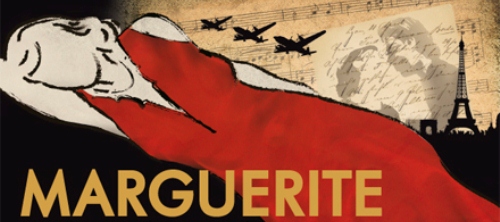
Musical
Musique: Michel Legrand • Paroles: Alain Boublil • Herbert Kretzmer • Livret: Alain Boublil • Claude-Michel Schonberg • Production originale: 3 versions mentionnées
Dispo: Résumé Synopsis Commentaire Génèse Isnpiration Liste chansons
Genèse: It began previews at the Theatre Royal Haymarket in London on 7 May 2008 and had its press night on 20 May 2008. Co-authors and producers Alain Boublil and Claude-Michel Schönberg announced an early closing date of 13 September 2008 (it had been scheduled to run through 1 November 2008). A new production of Marguerite opened on 2 December 2010 in Ostrava, Czech Republic. This production was entirely different from the original staging in London, completely rewritten book and lyrics by Alain Boublil and his wife Marie Zamora. New musical numbers were written by Michel Legrand and completely new orchestration added by William David Brohn. This new version was produced by the subsidized theatre NDM (National Moravian Silesian Theatre) in Czech, with lyrics by Michael Prostejovsky. The Czech creative team was led by director Gabriela Haukvicová. The main actress Hana Fialová in the leading role was nominated for the Thalie Award in the category "operetta, musical and other musical-dramatic genres" for outstanding female stage performance. The original version of the show had one of its first out of London stagings at The Mill Studio in Guildford from 12–15 January 2011, by PH Productions, featuring Becky Van-Orden as Marguerite and Oliver Trumble as Armand, supported by a cast of 16. The first London revival of Marguerite shall be staged by Alex Parker Productions from 3-28 October 2012 at the Tabard Theatre, having undergone extensive reworking. Whilst the concept has changed significantly, the featured songs are a hybrid of the Theatre Royal Haymarket production and the Ostrava, Czech Republic production. It features a totally new book with revised plot by Alain Boublil assisted by Director Guy Unsworth. The score has received a rigorous re-working by Jude Obermüller. Featuring a new 7-piece orchestration, Obermüller (under Boublil's supervision) has made major structural changes to the existing material, created several new musical arrangements and new vocal arrangements. Additional lyrics and book have been provided by Callum McIntyre.
Résumé: Marguerite is the beautiful and notorious mistress of a high ranking German officer. Armand is a young musician half her age who falls obsessively in love with her. Their dangerous love story is played out against the background of Occupied Paris.
Création: 20/5/2008 - Haymarket Theatre (Londres) - représ.
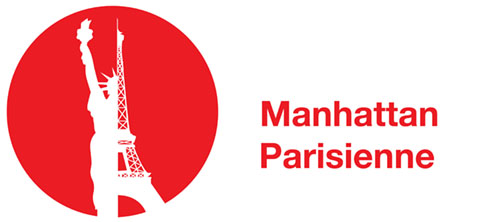
Musical
Musique: Paroles: Livret: Alain Boublil • Production originale: 1 version mentionnée
Dispo: Résumé
Genèse:
Résumé: Manhattan Parisienne – a New York story of differences and attraction, of two struggling artists and an unlikely meeting of minds. She is a French actress/singer. He is a Manhattan musician who has a history with Paris. Connected by music, they embark on a surreal journey through New York. Manhattan Parisienne features excerpts of songs from the classic French and American songbooks by songwriters including Jacques Brel, George and Ira Gershwin, Michel Legrand, Cole Porter and Charles Aznavour. The play, by Alain Boublil, made its debut at 59E59 theatres, New York and Marie Zamora (Eve) is to reprise the role here.
Création: 10/10/2017 - The Other Palace - Studio (Londres) - représ.